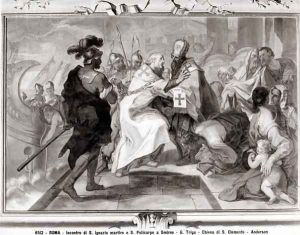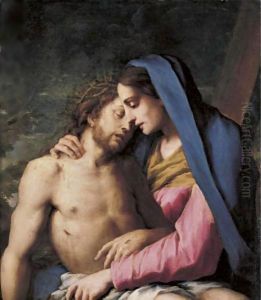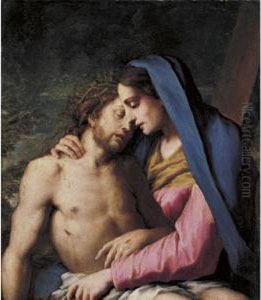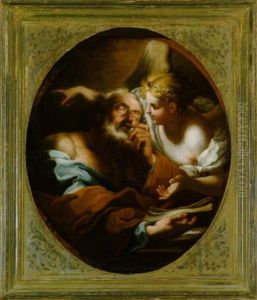Giacomo Triga Paintings
Giacomo Triga was an Italian painter renowned for his work during the Baroque period, a time characterized by dramatic expression, rich color, and intense light and shadow contrasts. Born in 1659 in Civitavecchia, a port city of the Papal States, Triga showed early promise in the arts. His initial training is somewhat obscure, but it is believed that he was initially influenced by the vibrant artistic scene in Rome, a city to which he moved early in his career. Rome, during the 17th and early 18th centuries, was a bustling hub for artists from across Europe. It was here that Triga's style evolved, blending influences from the Roman Baroque tradition with his own unique sensibilities.
Triga's works are characterized by their dynamic compositions and a keen attention to detail, often imbued with a sense of movement and emotional intensity typical of the Baroque era. He excelled in religious subjects, which were highly sought after by the Church and private patrons alike. His paintings often featured biblical scenes, saints, and episodes from Christianity, rendered with a dramatic use of light and shadow, which helped to enhance the emotional and spiritual impact of his work.
Despite his notable contributions to the Italian Baroque, Triga's name is not as widely recognized as some of his contemporaries, such as Caravaggio or Bernini. However, his works are preserved in several churches and galleries across Italy, serving as a testament to his skill and artistic legacy. Triga's ability to convey complex narratives through his paintings, combined with his mastery of Baroque aesthetics, makes his work an important part of Italy's rich cultural heritage.
Giacomo Triga passed away in 1746, leaving behind a body of work that continues to be studied and admired for its artistic value and historical significance. His contributions to the Baroque movement remain a significant part of the study of Italian art history, reflecting the vibrant and dynamic culture of his time.



